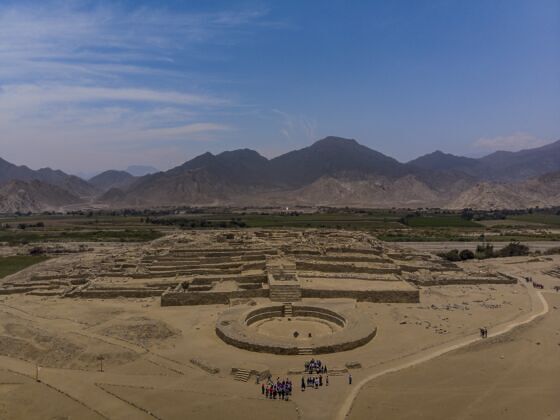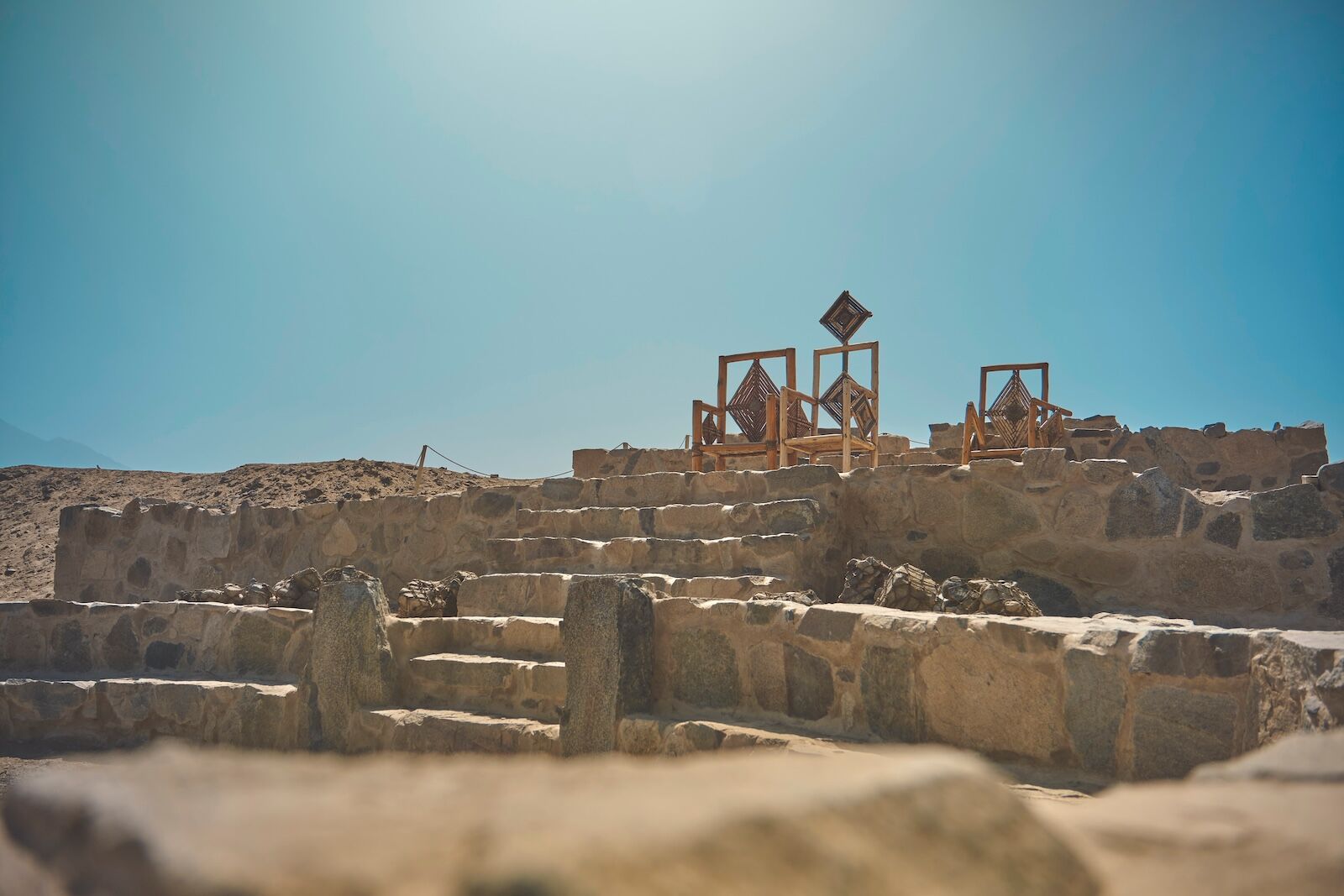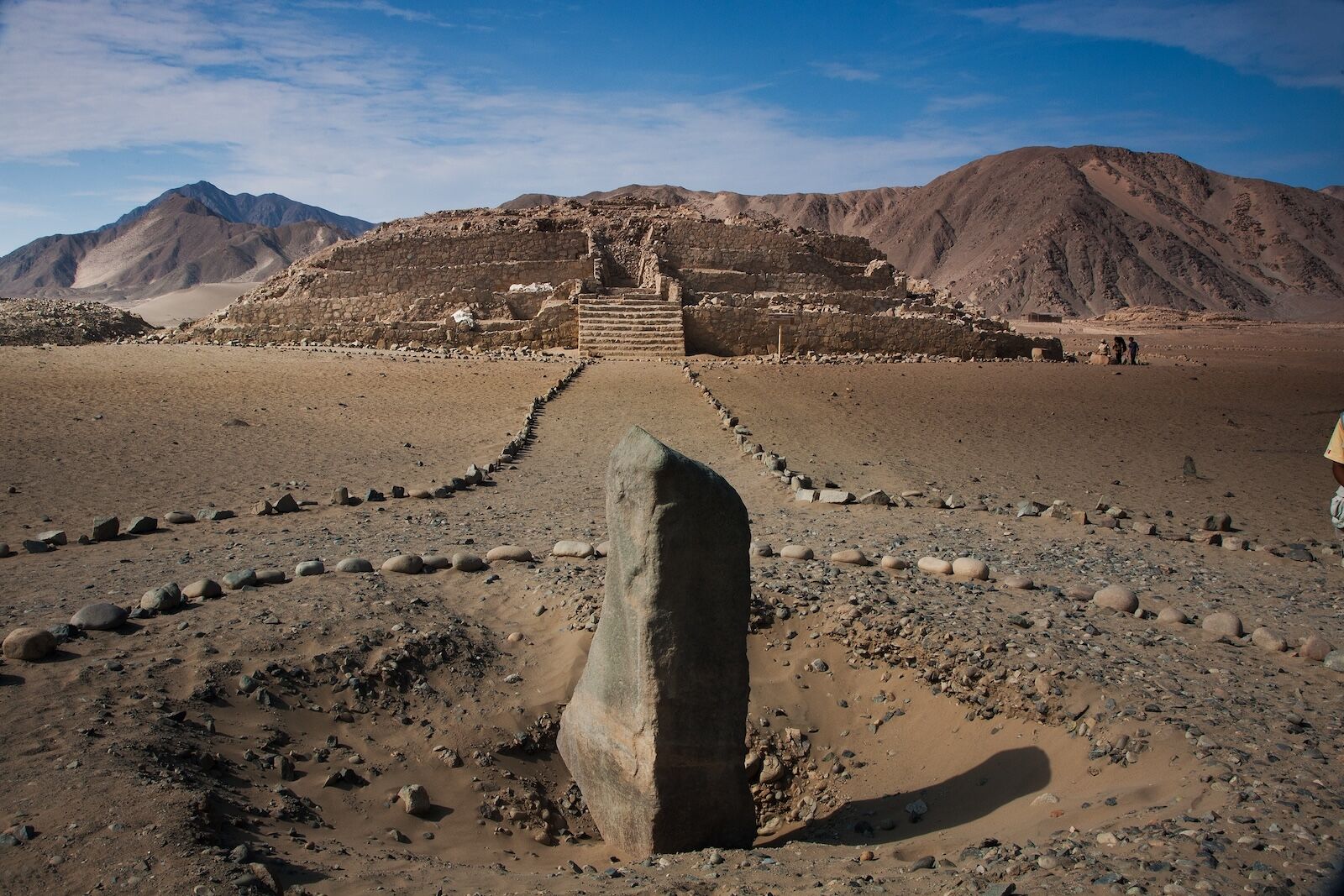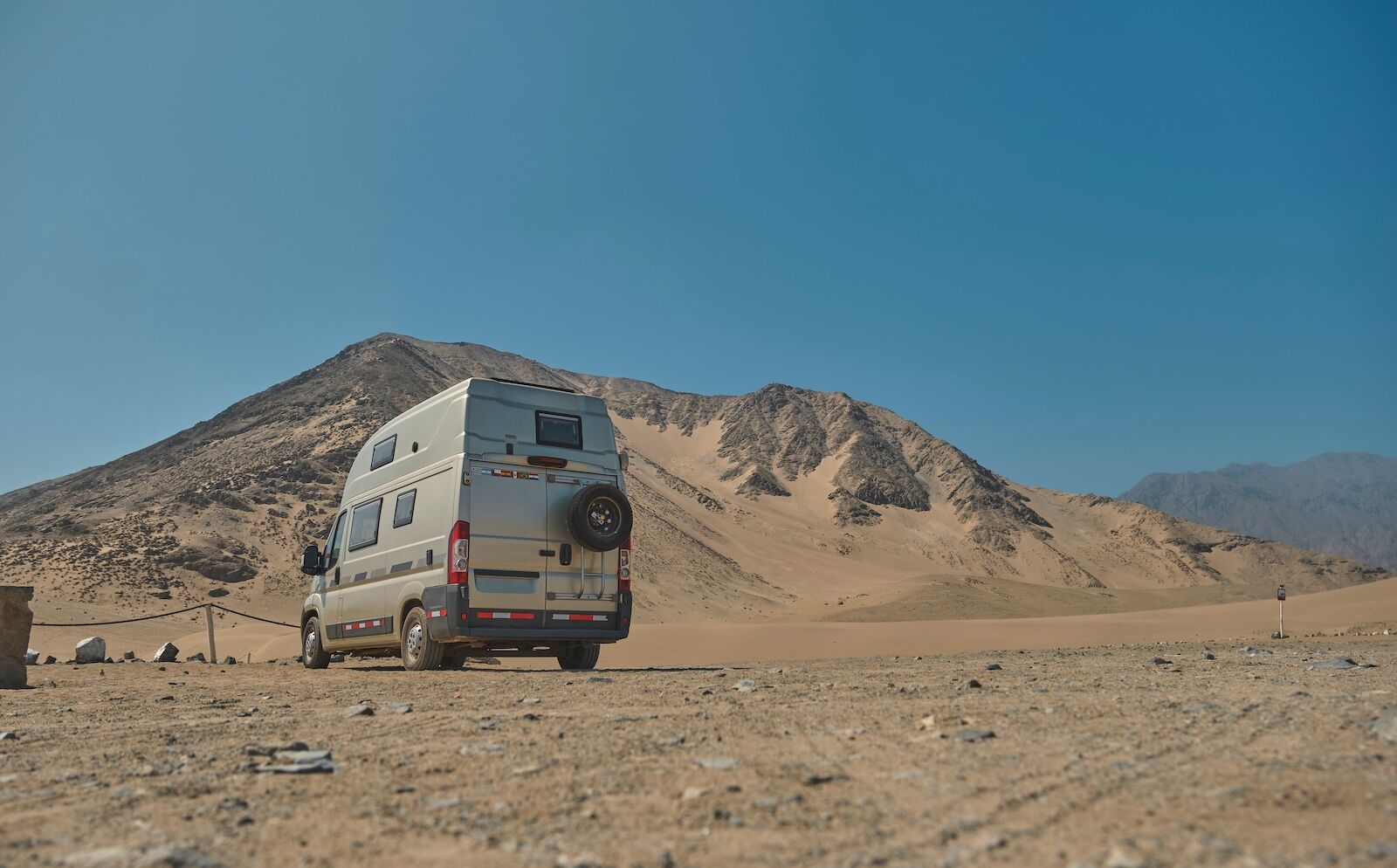Predating the Inca Empire by four millennia, a far-flung desert settlement in northern Peru preserves the oldest known civilization in the Americas. Although now inscribed as a UNESCO World Heritage Site and a natural warm-up for the Sacred Valley, Caral and its astonishingly intact pyramids and sunken plazas have evaded the limelight since their rediscovery 30 years ago.
Perched on an alluvial plain in the Supe Valley, the pre-Columbian Sacred City of Caral is an offbeat day trip from Lima. Visitors to Peru’s “other” Lost City are slim on the ground and circuiting America’s oldest ruins means being a fly on the wall at an ongoing dig where researchers excavate daily.
The Zona Arqueológica Caral (ZAC) is committed to responsible tourism and overcoming poverty. Training local villagers as mandatory archaeological guides, supporting non-industrialized agriculture, and marking celestial events with night camps upholds northern Peru’s cultural heritage while boosting the economy.





